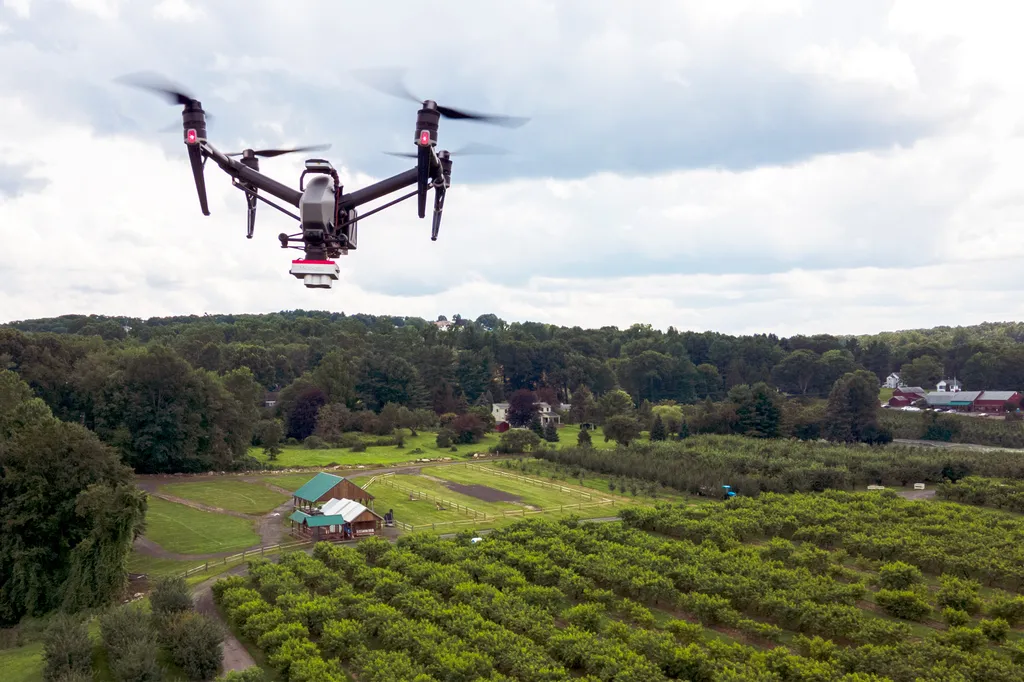In the rolling farmlands of Lebanon, Connecticut, a drone hummed overhead last October, dispersing seed over a standing cornfield in a demonstration that could reshape how the state’s farmers approach crop management. The flight, captured by photographer Brian Scott-Smith, wasn’t just a test of technology—it was a glimpse into a future where precision agriculture helps growers adapt to climate change, labor shortages, and rising costs.
The partnership behind the demonstration, a startup called Almanax, was born three years ago when drone pilot Mike Quick teamed up with Jim Smith, owner of Cushman Farms. Their goal was simple: find the best tools to help Connecticut farmers work smarter, not harder. What they discovered, however, was a roadblock. The most advanced agricultural drones—capable of seeding cover crops, applying pesticides, and monitoring plant health—are manufactured in China. With tariffs driving up import costs, Quick and Smith now see an opportunity to build these machines locally. “We’re looking at producing drones right here in Connecticut,” Quick said. “Otherwise, in a few years, farmers won’t have affordable options when their current drones wear out.”
The stakes are high. Climate change has already disrupted traditional planting schedules, forcing farmers to sow crops later in the season and often with lower yields. Connecticut Agriculture Commissioner Bryan Hurlburt sees drones as a critical adaptation tool. “By applying cover crop seed with drones while the corn is still standing, we maximize its benefits regardless of weather delays,” he explained. The technology could also spawn a new service economy, with larger farms purchasing drones—pre-tariff models cost between $40,000 and $60,000—and offering precision seeding and spraying to smaller operations. State grants, like the Farm Transition Program, could help offset costs for early adopters.
Beyond seeding, drones offer a suite of capabilities that could transform farm efficiency. Equipped with multispectral cameras, they detect early signs of plant stress—whether from drought, pests, or nutrient deficiencies—long before the human eye can spot them. Quick described recent trials on small plots where drones mapped emerging seedlings invisible to farmers on the ground. GPS-guided systems reduce chemical overlap, cutting waste and environmental impact, while eliminating soil compaction from heavy machinery, a silent killer of young crops.
The legal framework is evolving alongside the tech. While drone use in agriculture was never banned in Connecticut, the 2025 passage of House Bill 6289 clarified regulations, allowing licensed pesticide applicators to deploy drones for analysis and treatment. FAA approval remains a hurdle, particularly for crop dusting, but the state’s support signals growing recognition of drones as farm tools, not novelties.
For Jim Smith, the efficiency gains are undeniable. Tasks like field mapping and health analysis, once time-consuming and expensive, now take hours instead of days. But the broader implication, Quick noted, is cultural. Connecticut, like much of the U.S., faces a farming labor crisis, with fewer young people entering the field. Drones and related agtech could bridge that gap by attracting a new workforce—computer scientists, agronomists, and botanists—drawn to the intersection of agriculture and innovation. “This isn’t about replacing farmers,” Quick said. “It’s about giving them, and the next generation, the tools to farm smarter.”
As the drone over Lebanon’s cornfield completed its pass, the seeds it dropped weren’t just for cover crops. They were a bet on a future where technology helps farming not only survive, but thrive.

